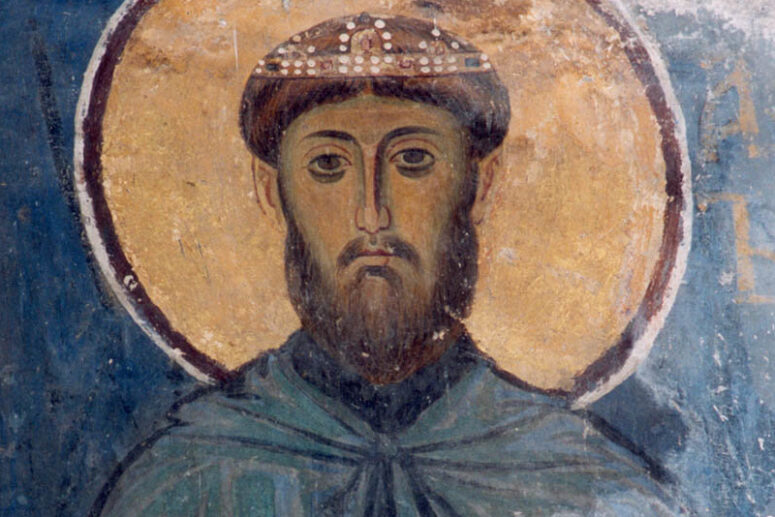
On December 2 by old calendar we celebrate the memory of Saints Barlaam and Josaphat, Prince of India. These saints are included in the Orthodox menologies; they appear on icons and in prayer-books. In Moscow there is a beautiful church in their honor. But what if instead of using the familiar names, we called these saints Balahvar and … Bodhisattva Gautama? Can Prince Josaphat’s life really be a “Christianized” biography of the founder of Buddhism? What is this opinion based on?
Life of Prince Josaphat
The protagonist of our story is Prince Josaphat, son of Abner, an Indian king known to be a persecutor of Christians. According to the Georgian version of the 55 Chaldeans’ life, the royal astrologer once predicted to the king that his son would accept the faith that he was persecuting. To prevent that from happening, Abner ordered to build a separate palace for his son, to isolate him from Christ’s teaching. The boy has grown into a young man and beseeched his father to sometimes let him out of the palace. During one of his walks, Josaphat met a leprous blind man, and another time he met a man who was dreadfully old. Josaphat realized then, that the world is full of sorrows and illnesses, with inevitable death awaiting everyone in the end. The prince was shocked; his understanding of the meaning of life was shaken.
God revealed the story of the prince’s soul, suffering in search of truth, to one wise hermit Barlaam, and he set off on a journey from the Senaar desert (or, according to other manuscripts, from the island of Ceylon). Disguised as a merchant, he arrived at Josaphat’s palace and said that he possessed a wonderful stone that had the power to cure ailments. The pilgrim was brought to the prince and expounded to him the Christian teaching in the form of various parables (mostly of Indian origin). Josaphat understood that the miraculous stone was Christ himself and received Baptism from the elder. Having commanded the young man to pray and observe fast, Barlaam left the palace.

Josaphat’s father then decided to hold a debate between pagans and Christians on the topic of faith, inviting the magician Nahor to the palace. They agreed that Nahor would shapeshift into Barlaam and lose in the dispute, thereby, dissuading the prince from believing in Gospel. The deception was revealed to the prince in his sleep, after which he threatened Nahor with fierce execution if he lost the dispute. As a result, Nahor, in the guise of Barlaam, unwillingly made such a speech that not only defeated his opponents, but persuaded himself to believe in Christ. Notably, his speech coincides with the Apologia of Aristides (an early Christian apologist, whose Greek manuscript is considered, lost). Josaphat then overcomes the temptation of female beauty, after which Abner gives half of his kingdom to his son, who restores the churches and soon turns his father to Christ. After Abner’s death, Josaphat leaves his country, finds his teacher and spends the rest of his life in ascetic labours near him.
Prince Josaphat = Gautama Buddha?
As you can see, there are several episodes in St Josaphat life, whose resemblance to the life of Buddha can hardly go unnoticed. Among them the most striking is the prince’s initial detachment from the realities of life, after which he faces illnesses and suffering. A parallel can also be drawn between Josaphat’s temptation of female beauty and Buddha being tempted by the demon Mara’s daughters.
The hypothesis of Josaphat’s Buddhist prototype became widespread in the world scientific community, after D. Zimaret proposed his etymology of the main characters’ names, where the Indian Bodhisattva through the Arabic Budhasf (Budisatif) and the Georgian Yudasif (Yiwasif), due to the fusion of letters, gave the Greek Josaphat. Arabic Bilawhar (Bilavkhar) through the Georgian Balahvar (Balavar) later gave the Greek Βαρλαάμ (Varlaam) (Muravyov A.V., Turilov A.A., Lukashevich A.A., Kvlividze N.V. Barlaam and Josaphat).
The fact remains that one of the first lives of Gautama, “Buddhacharita” (The Life of Buddha), was very popular not only in India, but also abroad. In its first Arabic translations, which appeared very soon, the Bodhisattva became “Budosaf”, which was later translated into Greek as Josaphat. The story of Josaphat was very popular in many countries of the world, as evidenced by the existence of about 140 versions of it in more than 30 languages, whereby the more ancient the manuscript, the less Christian details and more Buddhist motives there are in it. That is why many orientalists consider The Tale of Barlaam and Josaphat as the medieval Christian treatment of the legends about Buddha. The story was included in the favored collection, titled The Golden Legend. The Indian character was so widely appreciated among the common folk, that at the end of the 16th century Josaphat was included into the Roman Martyrology (Comm. 27 November), and in the 17th century also in the Orthodox calendar. It was also in the 17th century that two churches in honor of St Josaphat were built in Moscow.
So, has there really been such a Christian saint? It is entirely possible to assume that there lived an Indian prince who was, like Buddha Shakyamuni, isolated from the world, and, unlike Buddha, later led to Christianity in place of Buddhism. However, such a story of a Christian Indian prince would certainly have been known to St Thomas’s Christians, but they do not have anything of the kind. Perhaps there was a saint, into whose life, as it often happens in the hagiographic genre, various elements of Buddhist origin were incorporated, within the normal practice of borrowing and creative processing of hagiographic material. One way or another, the story of Barlaam and Josaphat is a remarkable monument of hagiographic literature, with varying details of its many versions, which have proven spiritually beneficial to many generations of Christians, reading it.




